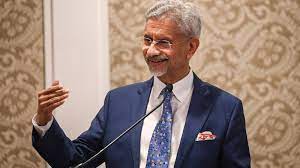 Even though the Narendra Modi Government started off with a proverbial military bang, and has received many bouquets for presenting a fairly “balanced budget” overall, for the Defence, however, it does not seem to be an ideal and balanced one. Depending on the perspective that one takes, the Budget proposal hardly provides the desired impetus for the modernisation plan of the defence forces which the Prime Minister and his party were sensitive to during and after the elections.
Even though the Narendra Modi Government started off with a proverbial military bang, and has received many bouquets for presenting a fairly “balanced budget” overall, for the Defence, however, it does not seem to be an ideal and balanced one. Depending on the perspective that one takes, the Budget proposal hardly provides the desired impetus for the modernisation plan of the defence forces which the Prime Minister and his party were sensitive to during and after the elections.
This “similar to interim Defence Budget” (except for the Rs 5000 crore increase, out of which Rs 1000 crore is for developing the Defence Railways infrastructure network) has a proposal for an outlay of Rs 2.29 lakh crore, a 12.4% increase over the Rs 2.036 lakh crore budget in 2013-14. The capital acquisition budget has increased to Rs 94,588 crore from last year’s Rs 86,740.71 crore. Interestingly, the defence budget grew 17% in 2011-12 and 12% in 2012-13.
However, when you consider the GDP, the current budget is a mere 1.74% of the projected GDP — a far cry from the stated goal of spending 3% of the GDP on Defence. Though this figure was backed by the Parliamentary Committee on Defence, in reality, this was never achieved in any Budget. Contrary to the statements of the government leaders, this Budget’s figure is lesser than even the 1.79% and 1.9% of the last two fiscal years.
After overcoming the “dark ages” of defence acquisition when bureaucratic lethargy coupled with lack of resources held in abeyance most of the modernisation plans, this Budget should atleast have been successful in overcoming the resource crunch while the new political directives could overcome the apprehensions of the bureaucracy.
The much hyped deal for the MMRCA Rafale waiting conclusion and demanding an initial payment of nearly Rs 15,000 crores (out of the around 100,000 crore full payment) is likely to be inked this year. However, with this (initial) payment, it is debatable if any other big ticket acquisitions can be accommodated. Meanwhile, the Defence Ministry has also stated that a deal of US$2.5 bn is nearly ready for 15 CH 47 F Chinook and 22 AH-64 D Apache helicopters which is again debatable as the Air Force acquisition outlay has decreased. With Rs 19,000 crore promised for the Phase II and III completion of INS Vikrant, the Indigenous Aircraft Carrier (IAC) under construction, the Navy is also keen on acquiring 45 MiG-29K naval fighters worth over $2 billion meant to operate both from INS Vikramaditya and INS Vikrant.
There is however an increase in the capital acquisition budget for the Army which is likely to provide the desired impetus to acquire the much required and long-delayed procurement of the 145 ultra-light howitzer M777 from the US costing Rs 3000 crore, the US built, man portable Javelin anti-tank guided missiles (ATGM) and night vision equipment worth Rs 2800 crore approximately.
The Budget also seeks to raise the FDI in defence from 26% to 49% to encourage foreign investors, but the benefits of this move are somewhat controversial. However, it remains to be seen if this initiative will really open the proposed floodgates of FDI in the sector. For the time being, it will assuage the demand for a level playing field by the contesting defence companies.
The main task of the Indian Armed Forces is to neutralise the challenges and threats being faced by the country. In this context, this budget will only sharpen the divide between an increasingly assertive China and the Indian security establishment trying hard to cope up with the Chinese military modernisation programme. In sheer comparison, China’s this year’s military budget of $132 billion is nearly three and a half times the meagre Indian defence budget of approximately US $ 37 bn. Taking into account that the actual Chinese military budgetary spending is often 40% to 60% higher than what is stated in the budget officially, the gap between the Chinese military spending and the Indian one increases to more than four times, making the current rise in Indian defence budget insignificant for the military planners in India.
Personal costs absorb a third of the budget in China, 50% in the US while in India it is 48% approximately. Having provided Rs 1000 crore for the One Rank One Pension (OROP) for the ex-servicemen, this has somewhat assuaged the long standing, legitimate demand of the marginalized ex-servciemen. Surprisingly, despite the support from both BJP and Congress, OROP didn’t materialise till now – indicating the lip service that the ex-servicemen had to endure.
Though the double digit growth in the defence budget looks impressive from outside, it has a moderate to poor outlook on the modernisation front. Much of the hike in the budget is consumed by the increase in salary, leaving very little for real modernisation requirements.
It must be remembered that the plan to modernise the Indian military was put on hold during the 1990s which has proved disastrous subsequently. It is only in the later part of the 2000’s that the renewed focus on modernisation could help the military to regain its operational punch, though last year the Army Chief’s leaked letter noted that the tanks are “devoid of critical ammunition”, the air defence is “97% obsolete”, the special forces are “woefully short of essential weapons” and there is a large scale void in critical surveillance and night-fighting capabilities — aspects that were later contested. Such lapses should not be allowed to re-occur in the near future, given the current challenges in our “tough” neighbourhood.
– The views expressed in this article are solely those of the author.
(Courtesy: ORF)
Author Profile
- India Writes Network (www.indiawrites.org) is an emerging think tank and a media-publishing company focused on international affairs & the India Story. Centre for Global India Insights is the research arm of India Writes Network. To subscribe to India and the World, write to editor@indiawrites.org. A venture of TGII Media Private Limited, a leading media, publishing and consultancy company, IWN has carved a niche for balanced and exhaustive reporting and analysis of international affairs. Eminent personalities, politicians, diplomats, authors, strategy gurus and news-makers have contributed to India Writes Network, as also “India and the World,” a magazine focused on global affairs.
Latest entries
 DiplomacyApril 23, 2024Resetting West Asia, re-booting the world, but not fast enough: T.S. Tirumurti
DiplomacyApril 23, 2024Resetting West Asia, re-booting the world, but not fast enough: T.S. Tirumurti India and the WorldApril 22, 2024India’s G20 Legacy: Mainstreaming Africa, Global South in global agenda
India and the WorldApril 22, 2024India’s G20 Legacy: Mainstreaming Africa, Global South in global agenda DiplomacyApril 10, 2024Diplomat-author Lakshmi Puri pitches for women power at LSR
DiplomacyApril 10, 2024Diplomat-author Lakshmi Puri pitches for women power at LSR India and the WorldApril 6, 2024UN envoy pitches to take India’s solutions to the world stage
India and the WorldApril 6, 2024UN envoy pitches to take India’s solutions to the world stage







